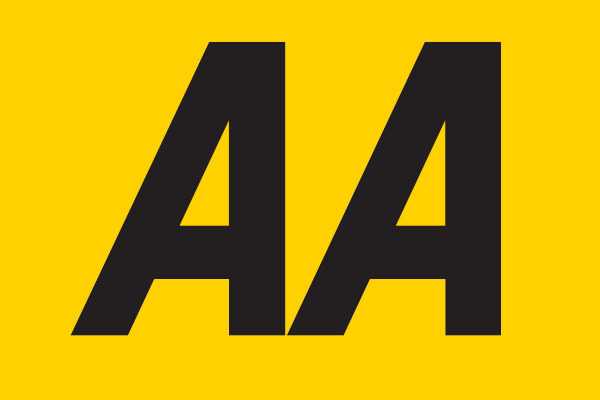Online Shopping
Consumer Rights: Online Shopping and E-Commerce Regulations
Online shopping has become a part of everyday life. It’s easier than going to the shops and is also often cheaper, and there is an unlimited world of things to choose from. But, when ordering online, there are different risks than you have when you buy in-store.
Search for a Company to begin a Claim
These risks with online shopping come from the fact that you can’t see what you are buying until it is in your hands after you have already paid. This means that sometimes goods can come damaged, faulty, or just the wrong item altogether. There are also risks in delays, meaning that you can’t always be 100% certain when your items will arrive.
There are consumer laws in place to protect you when you buy goods or services online. These help you when your item arrives faulty or damaged. They also protect you if the item is not as described or comes late. When buying services online, your rights are protected.
Distance Selling Regulations, Electronic Commerce (EC) Regulations 2002, and Consumer Contracts Regulations
The Distance Selling Regulations (UK) were laws which protected consumers from dishonest sellers over the phone, online or via post. They protected people who bought any items ‘at a distance’ – meaning not in-store or on the doorstep.
Distance Selling Regulations came into force in 2000 and were strengthened in 2002 by the Electronic Commerce (EC) Regulations. The EC or E-Commerce Regulations closed loopholes that retailers used to avoid refunding consumers and stopped activates such as ‘pre-ticked’ boxes.
Since 2014, the Consumer Contracts Regulations have taken over this role. They protect your rights to returning online goods if they are faulty, damaged, not as described or not fit for purpose when they arrive.
What to do if you make a mistake while shopping online:
When you are buying online, the seller should always give you the chance to check your items and delivery choices before you confirm your order. If there are mistakes, then you should be able to correct these before you pay.
Payment should also be marked with a ‘pay’ or ‘confirm order’ (or similar) button when you shop online. If they disguise it as a ‘continue’ button or something else, they have dishonestly taken your money. The Electronic Commerce EC Directive Regulations 2002 says that the ‘technical steps’ of the payment must be clear and specific.
After the payment has been approved, you should receive a confirmation of your order as a receipt. Usually, this is sent to your email address, but some sellers might text this to you, or display it on a web page. It’s important to check over this for any input errors you might have missed before.
When you buy online, you will always have 14 days to claim a refund, called a cooling-off period. Read more below to find out more about consumer rights for online shopping and returning items.
What to do if you received a damaged or faulty item:
The same laws and rules cover damaged and defective items. If an item arrives with you and it is either damaged or faulty, then you have rights to send it back. When you send an item back, the delivery costs should be paid by the company. This is because the Consumer Rights Act makes it law that the seller must try to resolve the situation.
Consumer law allows you to request that an item is individually repaired or replaced. Bear in mind; the company can deny this if one option is much more expensive.
Because you have a deal with the retailer and not the courier service, any damage caused in transit is also the responsibility of the retailer to deal with.
Until the parcel is with you or left in a place or with a neighbour you told them that any damage is done is the responsibility of the seller.
If it is damaged, you need to contact the retailer with evidence of the damage. Videos or photographs of what is faulty or damaged will help, but often the item itself is enough if it is missing parts or has other clear faults that were due to the retailer.
You will have six months from the moment you took ownership of the item to claim a refund. Before six months are up, the company must prove that the item arrived fine and you damaged it yourself. After six months, it is your responsibility to show that the item was delivered faulty.
To have the right to a full refund instead of a replacement or a repair, you must contact the company within 30 days. If they refuse to help you with this or make it overly complicated, then you can speak to us for advice on the best next steps to get your money back.
What to do if you didn’t get what you ordered:
Another risk with ordering online is that you can’t inspect the items you buy before you receive them. This means a company can accidentally send you the wrong thing. Sometimes this is as simple as the wrong colour being delivered, but it can also say that the entire item is incorrect.
If they have sent you the wrong item, you can claim a return or refund, in the same way, you can claim for a damaged or faulty item. E-commerce regulations make it that items must arrive as they are described online if they don’t then you have the right to claim for a return or refund.
Sometimes, the company will refuse to give you a refund, even when it is your right. Other times, companies might make the process very difficult or complicated, and making a refund takes so long it might not seem worth it. If either of these things happens to you, contact us today to ask for advice and help with claiming refunds or returns that you deserve.
Refunds for online purchases
Within 30 days of buying goods online, you have the right to a full refund if the item is faulty or damaged. Even if there is nothing wrong with the product you bought, then you have 14 days to tell the retailer you are going to return the item, and another 14 days to return it.
The first 14 days is known as your cooling-off period.
If it states in the retailers’ terms and conditions that you have longer to make a no-questions-asked return, then you will be given extra time.
These laws cover all purchases made with online, telephone and mail order, including ‘click and collect’ type orders. If you order something in store, and then opt to have it delivered to your address, this counts as a store purchase.
If you buy in-store, then you aren’t guaranteed the right to a refund. Most retailers will offer a ‘goodwill’ return and refund policy, but this is their choice to do so. E-commerce regulations give you stronger rights than in-store ones.
Sometimes, online retails make their online returns policy needlessly complicated. This can cause delays in returns, and confusion about consumer rights for online shopping. When this happens, shoppers who are within their rights for a return or a refund can be denied one – which is not right.
If you think that you have been wrongly unable to get a refund on something you bought online, please don’t hesitate to contact us for advice on how to move forward with this process.
How to claim for a late delivery
The Consumer Contract Regulations state that all deliveries which don’t have an agreed time of delivery must arrive within 30 days of you ordering. If a company fails to deliver within this time, you have certain rights. This is also the case if they fail to deliver within the agreed time.
This is why companies usually give you a window of a few days to expect the delivery – it gives them some leeway if things go wrong. The specified time window works when shopping online and when ordering for delivery when in-store.
When you are shopping online or in-store, make sure that if you can, they agree that ‘time is of the essence.’ This gives you more and stronger rights than if you don’t. Doing this gives you the right to cancel the order, end any credit agreements or have a refund on your deposit – or continue but at a lower, agreed price.
If you paid extra for a specific delivery date or a faster delivery option, and this hasn’t been met you should consider claiming this money back. It is the retailer’s responsibility to make sure that you get your item on time.
If an order is delayed past the agreed time window, or the 30 days, then you are likely entitled to a partial or full refund. In some cases, consumers are due compensation for any extra costs or losses they had because of the delay in delivery.
Returning an online purchase
If an item ordered online being delayed, damaged, faulty or not as described has left you not wanting it any more, you can return it. When you do so, the costs associated with returning the item should be covered by the seller.
Within 30 days of receiving the item, you have the right to return it and claim a full refund. After the 30 days, but before six months are up you will have to provide a reason why you want to return it, and the seller will have the chance to repair or replace the item. If you’re going to return it in this time, you must state that it was damaged, faulty, not as described or of unsatisfactory quality when it arrived.
After six months of the delivery date, you will have to prove that the item was damaged when it arrived. Having video footage or photographs from the time can help you with this because otherwise, you will not be able to claim a refund, repair or replacement from most companies.
































































































